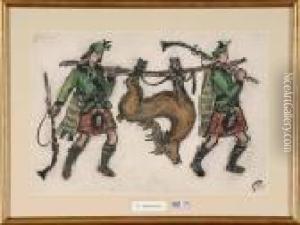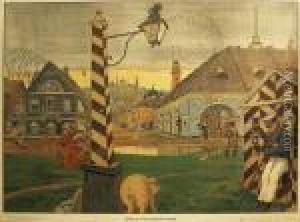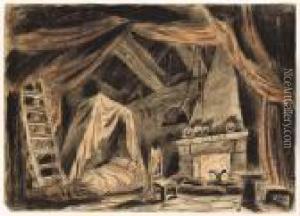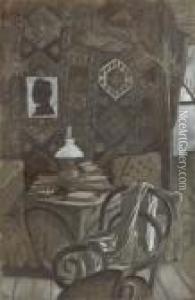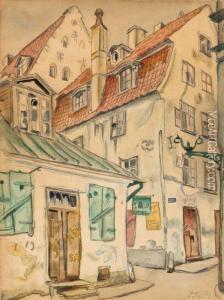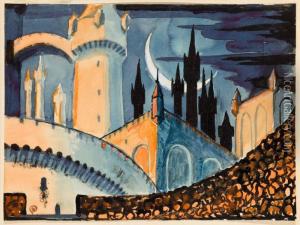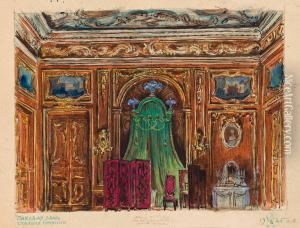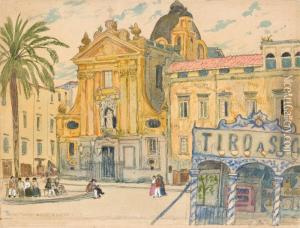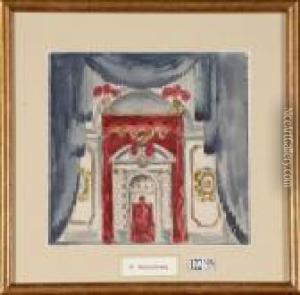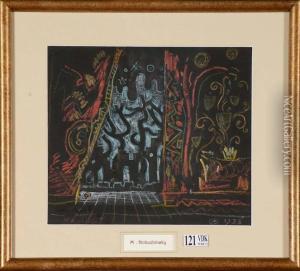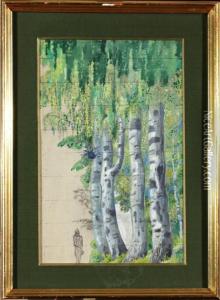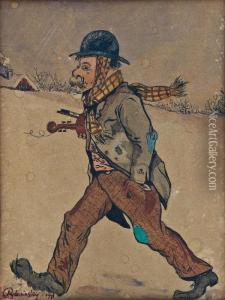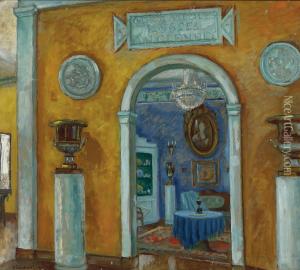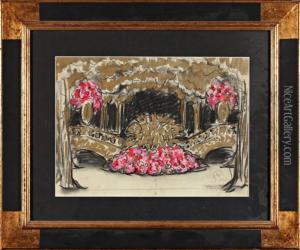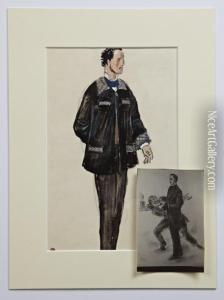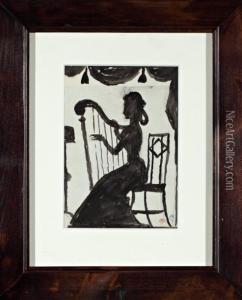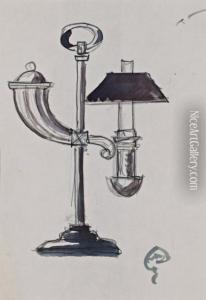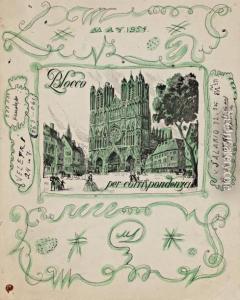Mstislaw Valerianov Dobuzhinskii Paintings
Mstislav Valerianovich Dobuzhinsky, born on August 14, 1875, in Novgorod Province, Russia, was a prominent Russian-Lithuanian artist known for his cityscapes, illustrations, and stage designs. He was associated with the Mir Iskusstva (World of Art) movement, which sought to promote artistic quality and innovation in Russia in opposition to the industrialization of art.
Dobuzhinsky was educated in law at Saint Petersburg University, but his passion for art led him to study at the Drawing School of the Society for the Encouragement of the Arts in St. Petersburg and later in Munich under Anton Ažbe. His early works were influenced by Art Nouveau, but he later developed his own distinctive style that combined elements of realism and symbolism, characterized by meticulous attention to detail and a mood of melancholy and introspection.
During the early 20th century, Dobuzhinsky gained recognition for his illustrations for classic Russian literature, including works by Dostoevsky and Gogol, and for his designs for theater productions. He was also a member of the Union of Russian Artists and participated in many exhibitions, contributing to the development of Russian modernism.
Following the October Revolution, Dobuzhinsky's relationship with the new Soviet regime was complicated. While he worked on several projects under the Soviet government, including teaching at the Higher Art and Technical Studios (VKhUTEMAS), the political climate and artistic restrictions eventually led to his emigration in 1924.
Dobuzhinsky moved to Lithuania and later to Western Europe, where he continued to work as a stage designer, notably for the Glyndebourne Festival Opera in England. He eventually settled in the United States in 1939, where he taught at the Art Students League in New York and continued to paint and exhibit his work.
Throughout his life, Dobuzhinsky's art was a reflection of his personal experiences and the changing world around him. His cityscapes, often depicting the urban transformation and the alienation of the individual within the modern city, are particularly notable. His legacy includes a vast oeuvre that captures the spirit of an era in Russian history that was marked by both cultural flourishing and political turmoil.
Mstislav Dobuzhinsky died on November 20, 1957, in New York City. His works remain in numerous museum collections, including the Tretyakov Gallery in Moscow, the Russian Museum in Saint Petersburg, and the Lithuanian Art Museum in Vilnius, testifying to his enduring influence on Russian and Lithuanian art.
